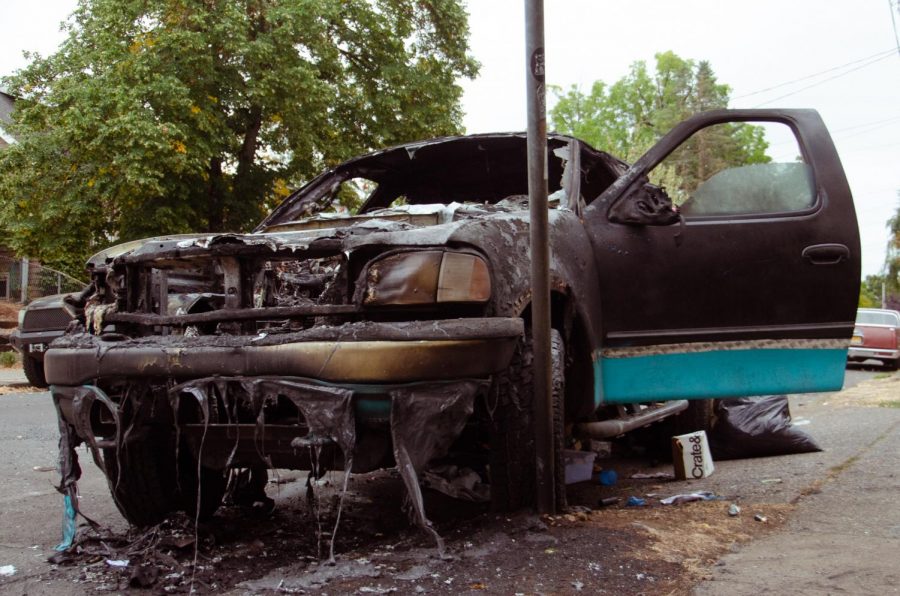Dummies in Cars and Companies: How the Auto Industry Overlooks Women
An American woman is significantly more likely to be injured as a passenger in a frontal crash than a man due to the build of cars.
December 1, 2021
Every time a woman steps into a car, she is put at risk.
More risk than men.
Safety on the road is still far from equal between the sexes.
An American woman is 47 percent more likely to be injured as a passenger in a frontal crash than a man due to the design of cars. Women are also about 70 percent more likely to suffer severe leg injuries after being involved in a crash.
In a world where American businesses put such emphasis on diversity and claim to stand for equality, Congress cannot sit back and allow car manufacturers to create cars that endanger roughly half the population of America.
A study conducted from 1998-2008 shows that when wearing seat belts, female drivers were more likely to be injured than male drivers. As a result, female drivers sustained more injuries to the chest and spine.
The discrepancies in safety between men and women can be largely attributed to the use of mainly male dummies. The dummy modeled off of a male body fails to account for the average lower weight, narrower shoulders, excess tissue in the breasts, weight distribution with more weight in the lower body, height, average neck strength, and posture of a woman.
When conducting crash tests, the federal government uses only dummies that were designed based on male bodies, and the federal government does not require companies to use dummies modeled on female bodies in their safety testing protocols.
We must work to abolish the bias that is ingrained in the minds of the people who make decisions regarding the practices and expectations of crash safety, no matter how implicit their bias may be.
While the government and car manufacturers bear primary responsibility, the general population remains oblivious to this issue while the companies fail to be more transparent and inform the public. The longer this issue, the more harm women continue to be exposed to.
It is clear that cars are built for men, which alludes to a broader issue in our society.
If we are involuntarily neglecting the needs of women in this aspect of life, where else might inequality lie?
There are a plethora of other inequalities harming women, including military equipment and attire, CPR mannequins, and much more.
There was a bill recently introduced by Eleanor Holmes Norton intended to heighten vehicle safety for women by mandating government crash testing to use both male and female test dummies when evaluating safety standards in modern vehicles testing crashes in the driver’s seat.
Though this bill — which has not been passed so far — does reduce the problem minimally, it still does not bring the situation to justice. Why are we mandating the use of female crash test dummies in merely the driver’s seat? Why not in the passenger’s seat and in the back?
Though it may be involuntary, and people are not necessarily blatantly attempting to harm women, this situation has been harming women for a long time and needs to be remedied.
These inequalities in automobile safety are easily preventable. So why do we sit back and not even attempt to prevent it? We must actively choose to take action to prevent this.
If we ever wish to achieve gender equality, this is a step that must be taken.
If women are put in significantly more danger than men every day when they get in a car, what other unjust gender inequalities are plaguing the world that we are not aware of?
This must end.
We, as a society, should take advantage of every opportunity to help rectify this gross injustice.
Although the car manufacturers and the government are ultimately at fault for the lack of regulation surrounding sex-inclusive crash testing, while we wait for these corporations to catch up with these demands, we must work to bring change ourselves.
So peacefully protest. Post about it on social media. Volunteer your time to organizations that help with female inequalities. Inform others.
There truly are a myriad of different ways to be a part of ending this.
When an issue can mean life or death for millions of Americans, action is essential.
So make your decision. Figure out where you stand. But if you decide that this is important to you, don’t sit back and wait for other people to do the job, because then it will never get done.





